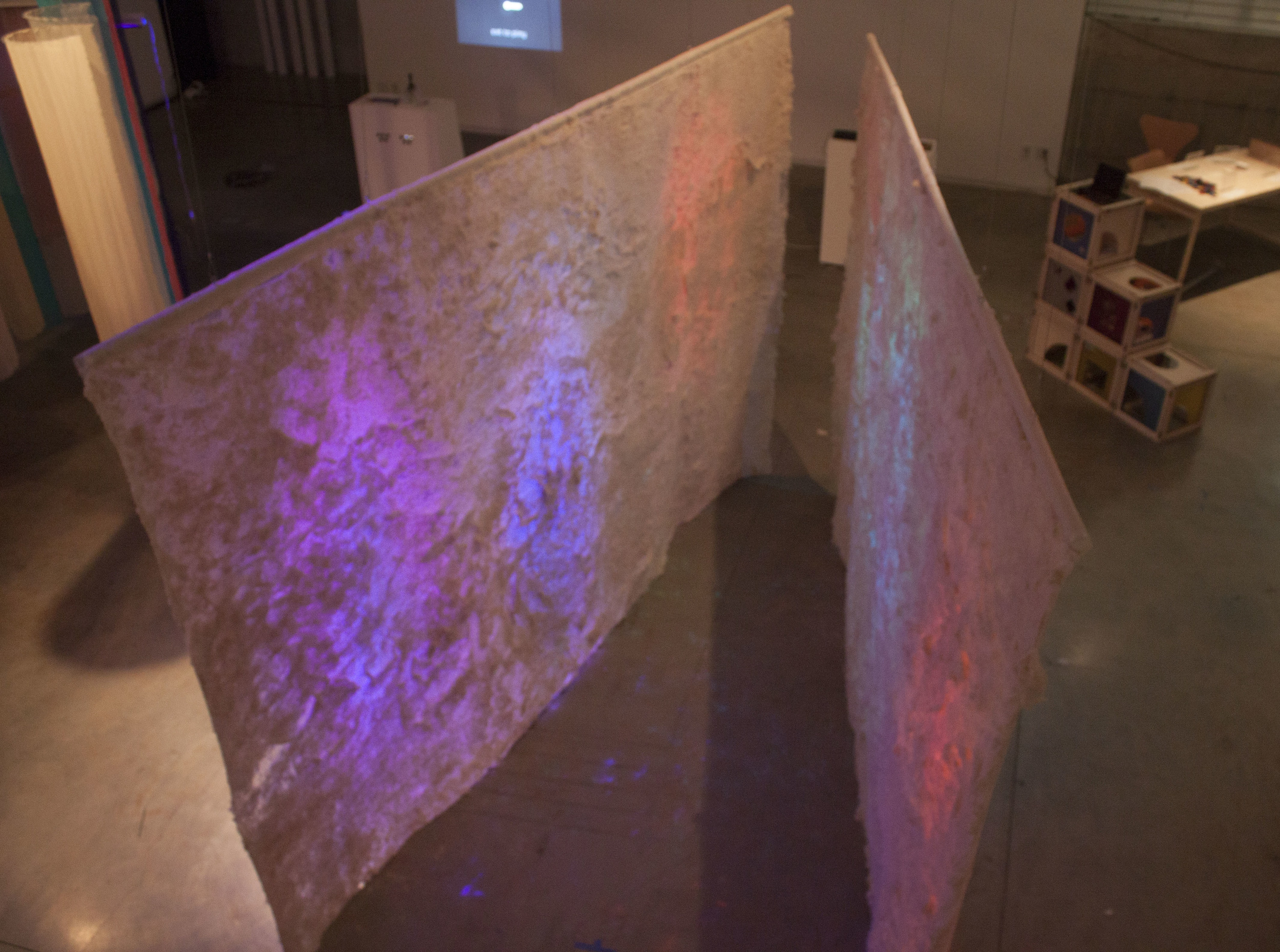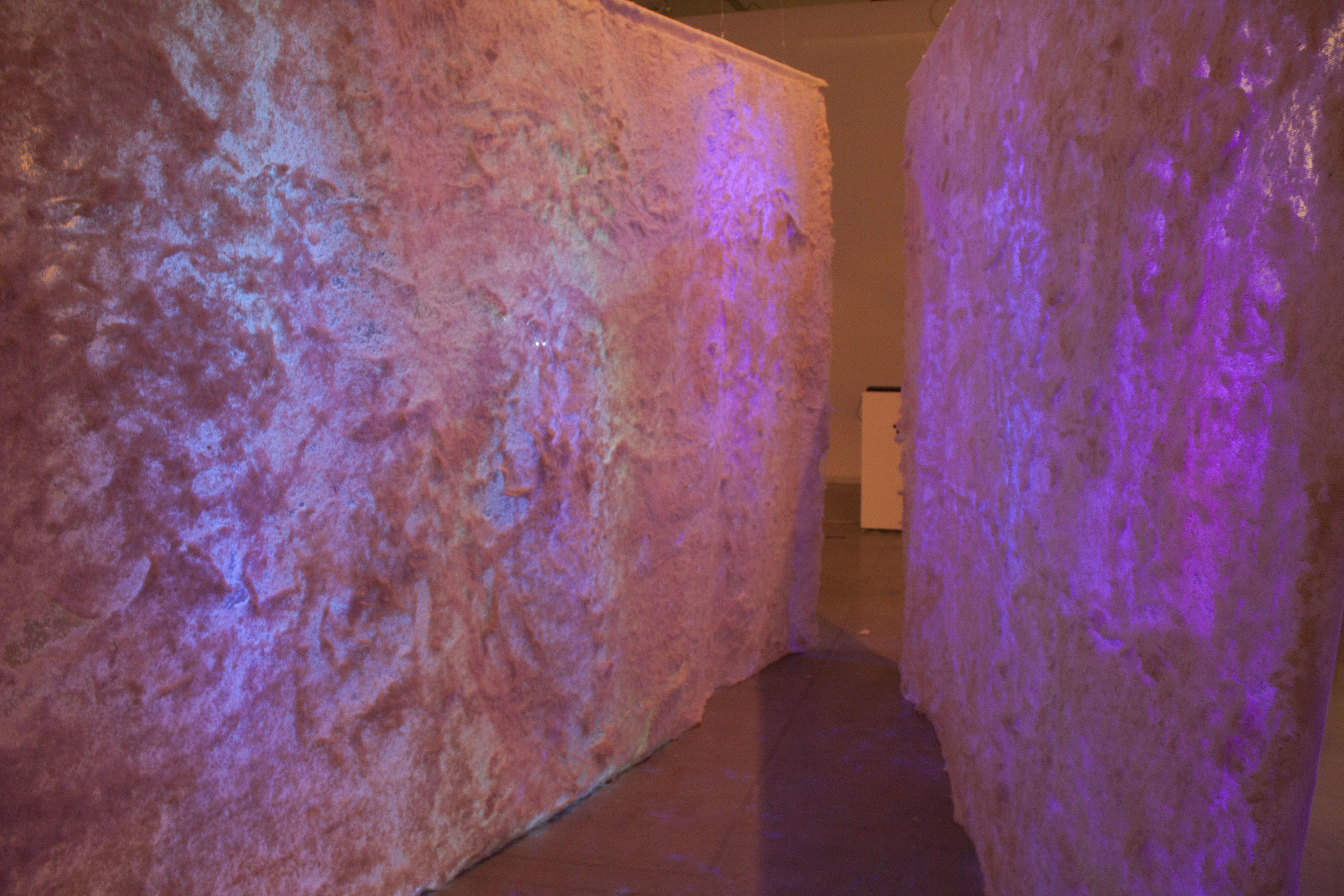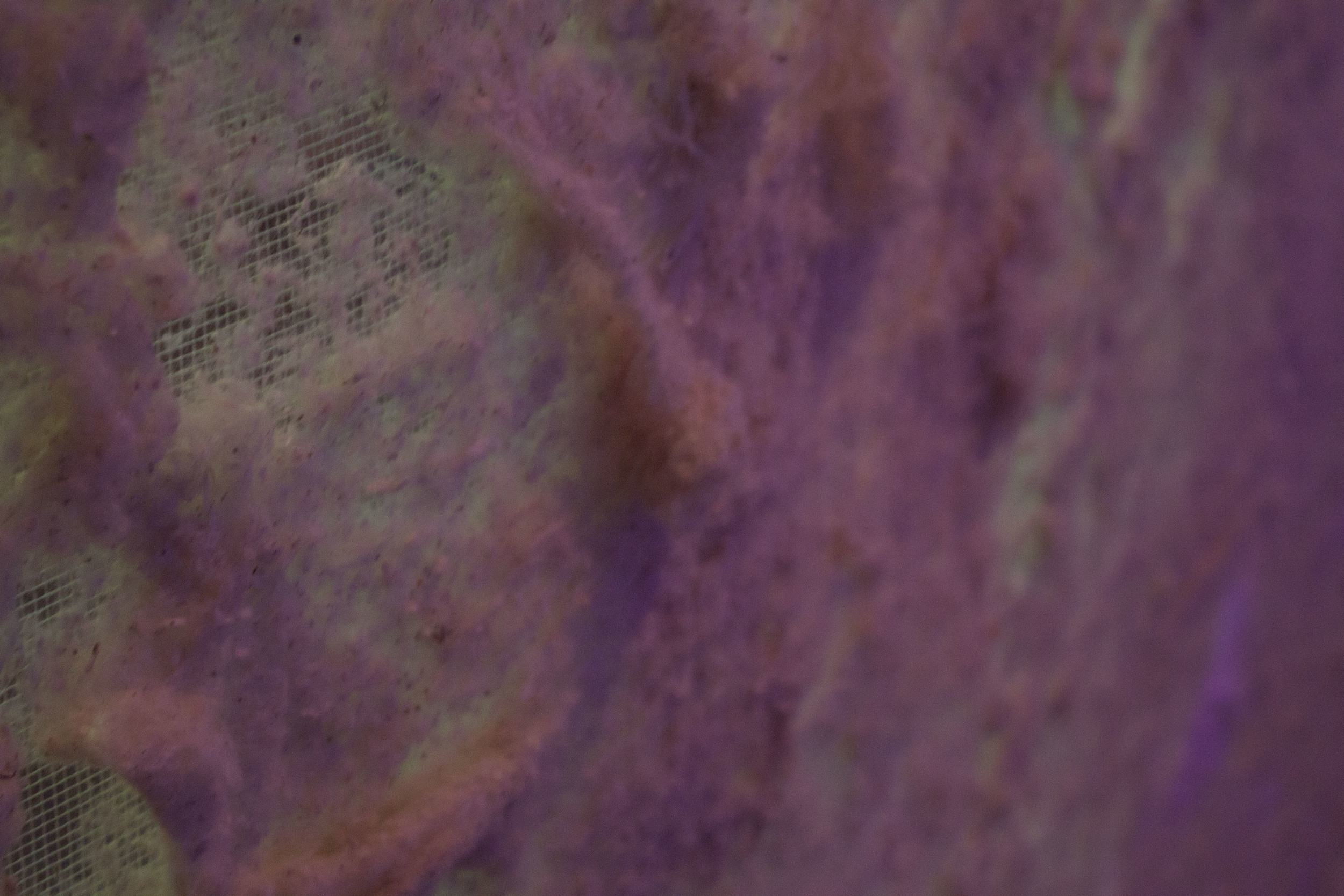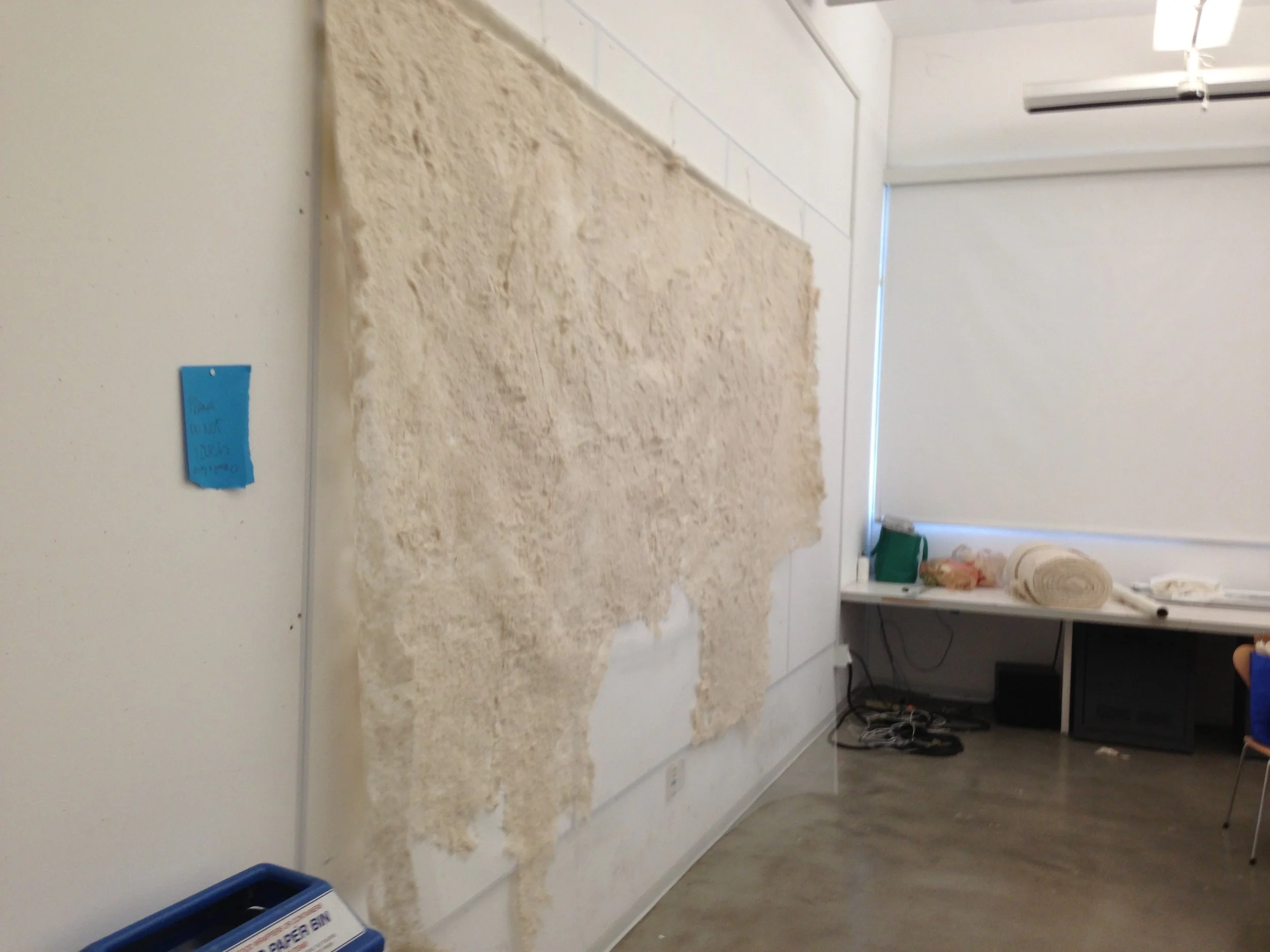Gossypium Passage
Gossypium Passage is an immersive installation that explores spatial and personal intimacy through tactile interaction and atmospheric lighting. The piece consists of a suspended corridor constructed from raw cotton batting, measuring eight feet tall and twelve feet long, and illuminated by slowly shifting multicolor LED lights.
Visitors were invited to walk through the passageway alone or with a partner, engaging directly with the soft, cloud-like walls. The funnel-shaped design gradually narrowed as participants progressed through the space, creating inevitable physical contact with the cotton surfaces. Combined with the gently changing colored light, the installation produced a disorienting, time-suspending experience that emphasized touch, intimacy, and sensory presence.
The title references Gossypium, the botanical genus from which cotton is harvested, grounding the ethereal experience in the material reality of the natural fiber that defined the space.
Process
Conceptual Development
The initial concept centered on creating an immersive structure that captured the sensory fantasy of resting in clouds—soft, warm, and enveloping. Early sketches explored pod-like forms that would fully surround visitors in a cocoon of tactile comfort.
When spatial and budgetary constraints made the original vision unfeasible, I drew inspiration from Bruce Nauman's Green Light Corridor and Berndnaut Smilde's indoor cloud installations to reimagine the concept as a passageway. The corridor format allowed me to maintain the intimate, immersive quality while working within practical limitations. The funnel shape was a deliberate design choice that transformed constraint into interaction, ensuring visitors would physically engage with the walls rather than simply observing them.
Material Innovation
The structure required a material that was both lightweight enough to suspend from the ceiling and substantial enough to create an enveloping tactile experience. Raw cotton batting became the ideal solution. I separated the batting into thin, translucent layers and applied them to an adhesive fiberglass drywall mesh backing. This layering technique achieved a cloud-like translucency that allowed the colored light to filter through the material, creating depth and atmosphere within the passage.
The walls were constructed by overlapping four lengths of mesh tape with six-inch seams, creating continuous surfaces that could support the accumulated weight of the cotton layers.
Structural Problem-Solving
The first wall presented immediate challenges. Without a proper support system during construction, the increasing weight of the applied cotton caused tearing and sagging in the mesh backing. This failure prompted a rapid redesign of the hanging mechanism.
I developed a modular suspension system using one-foot segments of PVC pipe connected by joints to prevent slumping. Eye screws were installed at each joint to attach hanging wire, and aluminum ferrules secured the wire at the correct height. This system provided the necessary rigidity while maintaining a lightweight profile suitable for ceiling suspension. The second wall was constructed while hanging from this improved system, eliminating the structural issues entirely.
Lighting Design and Adaptation
The original lighting plan involved custom-built ground-based light boxes that would project illumination upward onto the cotton walls. I constructed the boxes from thin plywood with foil-lined interiors to amplify reflection, each housing four wired sockets connected to programmable color-changing LED bulbs.
However, testing revealed a critical flaw: the boxes concentrated light in localized pools rather than creating the even, atmospheric glow the installation required. With installation approaching, I made the decision to abandon the light boxes and instead adapted the gallery's existing track lighting system. This pivot allowed me to position individual LED bulbs at varied angles, achieving more even coverage across the cotton surfaces and better supporting the immersive, time-suspended quality central to the visitor experience.
Outcome
Gossypium Passage successfully created an intimate, tactile environment that invited physical interaction and sensory exploration. Visitors moved through the suspended corridor, engaging with the soft cotton walls and experiencing the gradual color transitions that transformed the space. The piece demonstrated how material experimentation, structural adaptation, and responsive problem-solving could transform conceptual ideas into realized spatial experiences.















